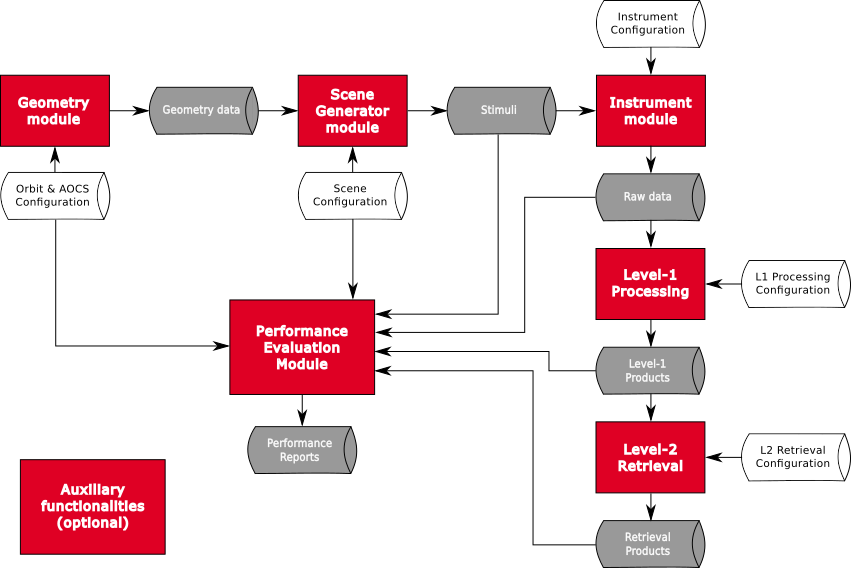ARCHEO-E2E: The Reference Architecture is the high-level decomposition of the architecture for an End-to-End Simulator [Ref.]
- The reference architecture defines a series of six high-level modules and the interfaces among them that are common to all type of missions and instruments.
- Although the reference architecture is generic, it is flexible to be adapted for the different mission particularities.
- Depending on the type of instrument to be simulated each of the six high-level modules will have an internal architecture broken down in building blocks.
- Some of the high-level modules and lower-level building blocks will be generic across missions and instruments (for example: the Orbit Block).
The following are the six high-level modules of the Reference Architecture:
- Geometry Module – in charge of simulating the SC orbit and attitude, as well as the generation of the observation geometry of each instrument.
- Scene Generator Module – in charge of simulating the scene to be observed (terrain, ocean or atmosphere) and all environmental effects (radiative transfer models, atmosphere simulation, illumination conditions…) to be considered for the correct generation of the stimuli to be entered to the instrument model.
- Instrument Module – in charge of simulating the sensor behaviour, having different outputs depending on the type of instrument.
- Level-1 Processing Module – in charge of the generation of level-1 products, from level-1a to level-1c.
- Level-2 Retrieval Module – in charge of performing the retrieval of the geophysical parameters that are objective of the mission/instrument. Depending on the mission and on its definition of the products, this module would generate level-2 data or products at higher level of processing.
- Performance Evaluation Module – in charge of performing the needed analysis of the simulator outputs to evaluate the performances of the mission. It could be run at different points of the simulation chain.

